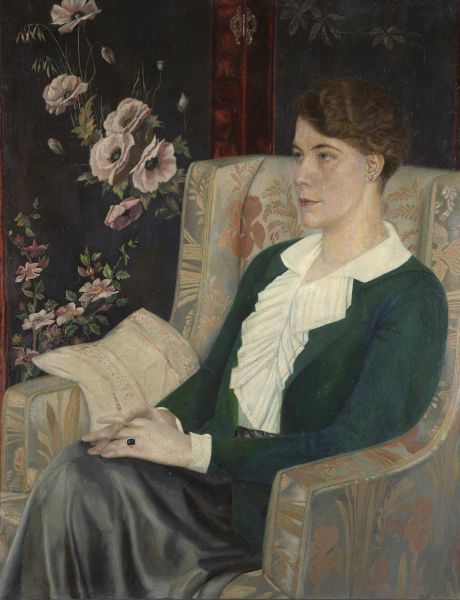|
|
Portrait of Yevdokia Glebova. 1915

Filonov Pavel,
Oil on canvas
97,5 x 77,5
State Russian Museum
Пост.: 1977, дар Е.Н.Глебовой, сестры художника (Ленинград)
Annotation
Yevdokia Nikolaevna Glebova (née Filonova) (1888–1980): Singer, vocal teacher, younger sister of the artist.
After the death of Pavel Filonov and his wife in the Siege of Leningrad, his sister Yevdokia Glebova was evacuated from the blockaded city. Before leaving Leningrad in 1942, Yevdokia transferred all her brother’s works to the Russian Museum for temporary storage. On her return after the war, she took the works back and carefully kept them at her home until 1960, when she again entrusted them to the Russian Museum. In 1977, shortly before she died, Yevdokia Glebova officially donated three hundred works of painting and graphic art to the Russian Museum, followed by another fifteen works.
Pavel Filonov’s Portrait of Yevdokia Glebova differs markedly from the artist’s other works of the period. The picture is devoid of his usual free approach to the sitter, frightening encoded images and polyphonic expressive resources. The artist unexpectedly betrays his interest in classical art and long hours spent in the Hermitage, admiring the canvases of the North Renaissance masters and the simplicity with which they portrayed their heroes. Filonov noted that scrupulously painted details of an everyday setting in the canonic image of a saint evoked a special feeling of authenticity.
Yevdokia Glebova was particularly close to Pavel. He highly rated her talent for music and always listened to her opinions. More conservative than her brother in her artistic tastes, Yevdokia possibly influenced his choice of technique in this portrait. Pavel Filonov claimed that he could work in any manner; the most important thing was to find a plastic tongue equivalent to the image.
Author's Biography
Filonov Pavel
Filonov, Pavel Nikolaevich
1882/83, Moscow -1941, Leningrad
Painter, graphic artist, theatrical designer, poet. Studied at painting studios in St Petersburg (1897-1901), Lev Dmitriyev-Kavkazsky''s studio (1913-08), School of Drawing, Society for the Encouragement of Artists (1893-1901) and under Vasily Savinsky and Jan Ciaglinskj at the Higher School of Art, Imperial Academy of Arts (1908-10). Contributed to exhibitions (from 1910). Founding member of the Union of Youth (1910). Founded the Made Pictures studio of painters and draughtsmen and published its manifesto (1914; second version published in 1923). Helped to design the sets and costumes for a production of Vladimir Mayakovsky: A Tragedy (1913). Wrote the poem Chant of Universal Flowering (1914-15). Headed the Department of General Ideology at the Museum of Artistic Culture (1923). Helped to write the statute of the Institute of Artistic Culture. Formed the Masters of Analytical Art (1923).

